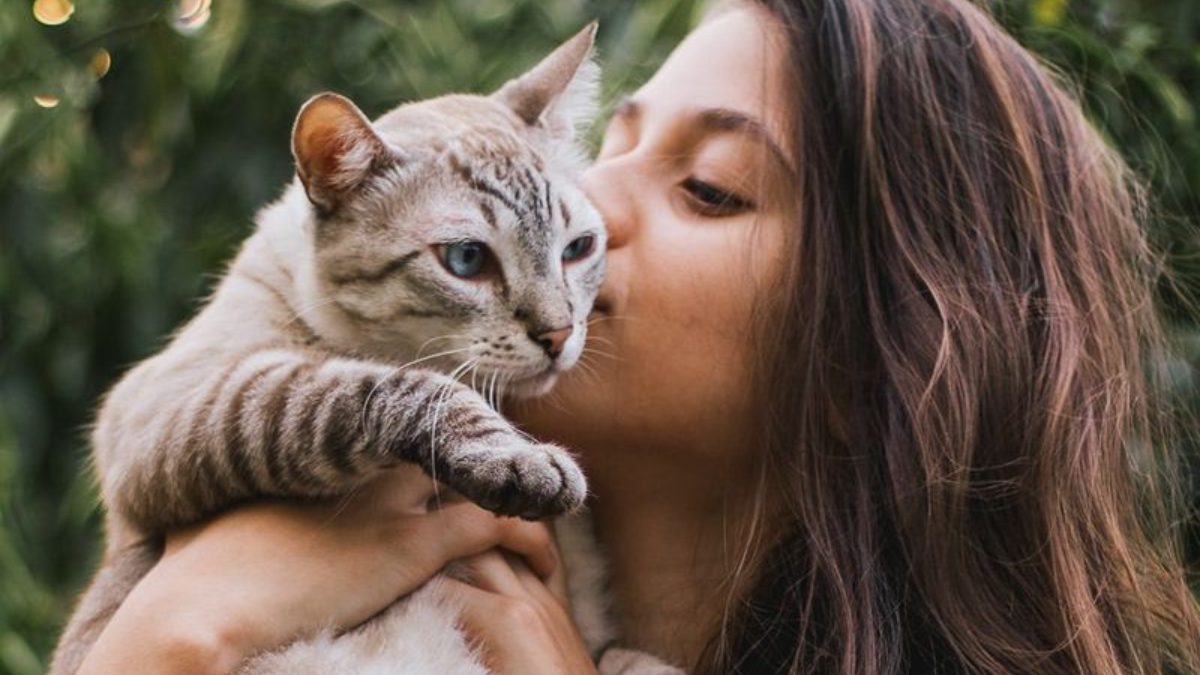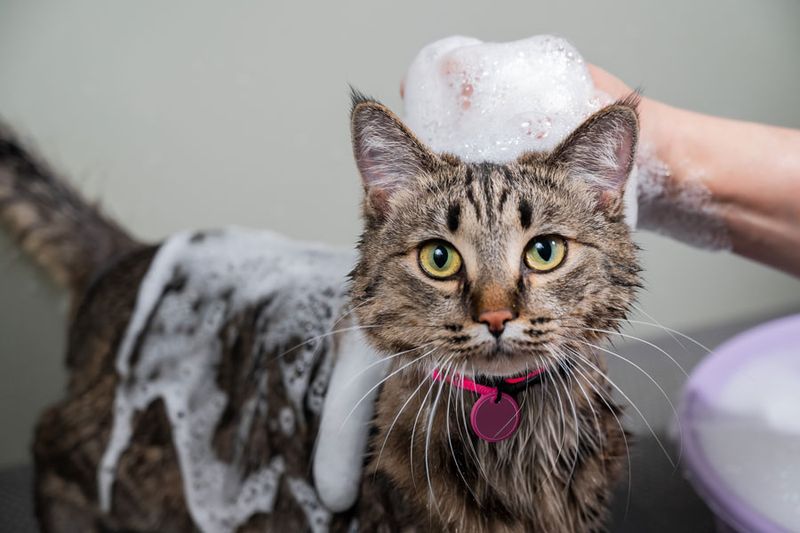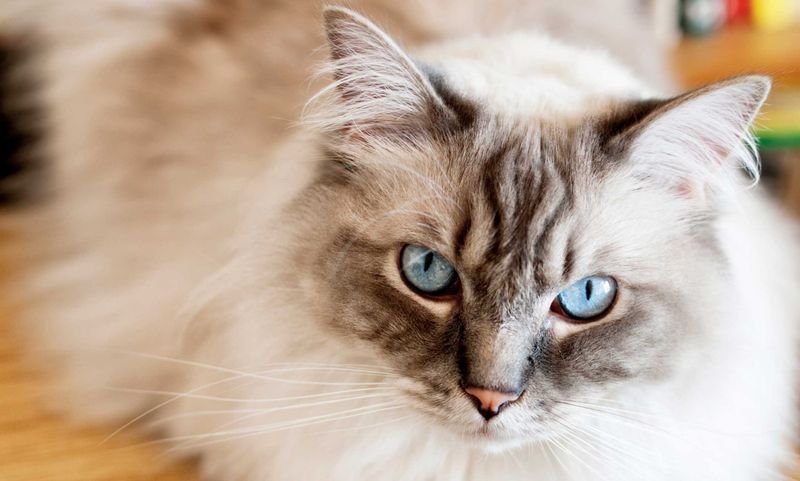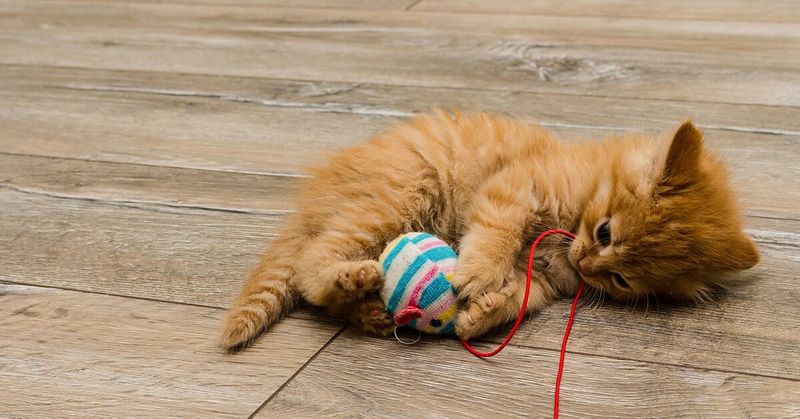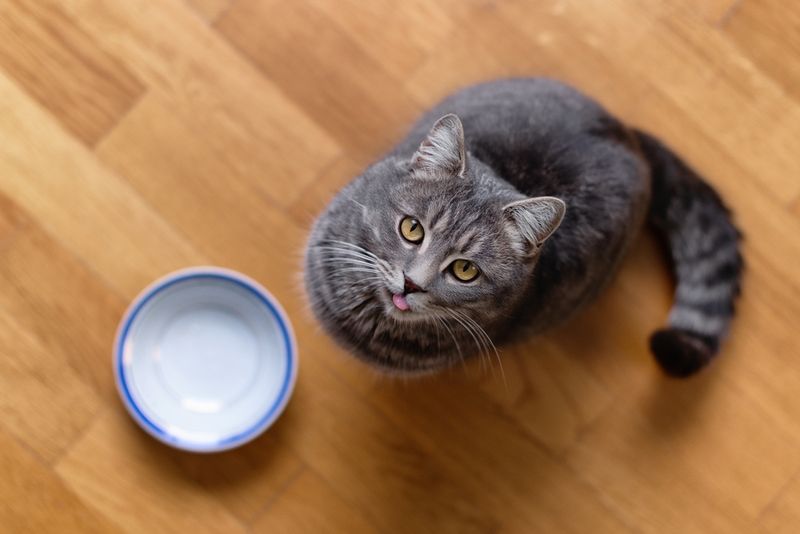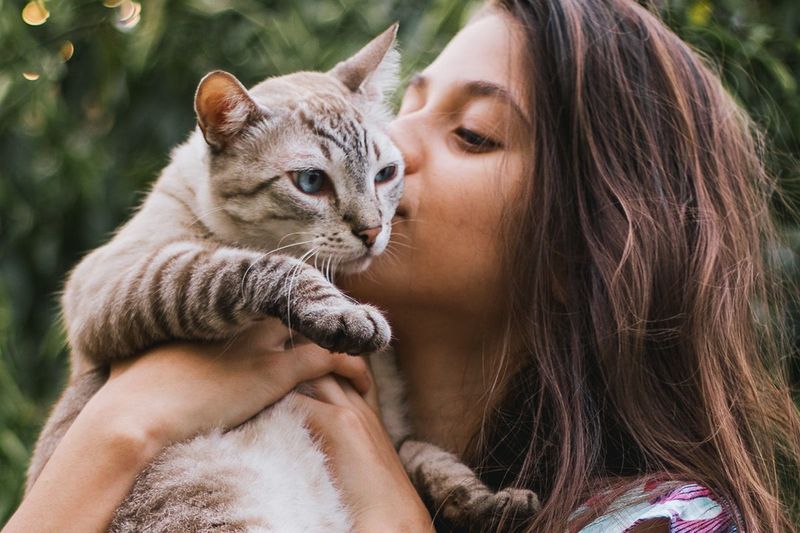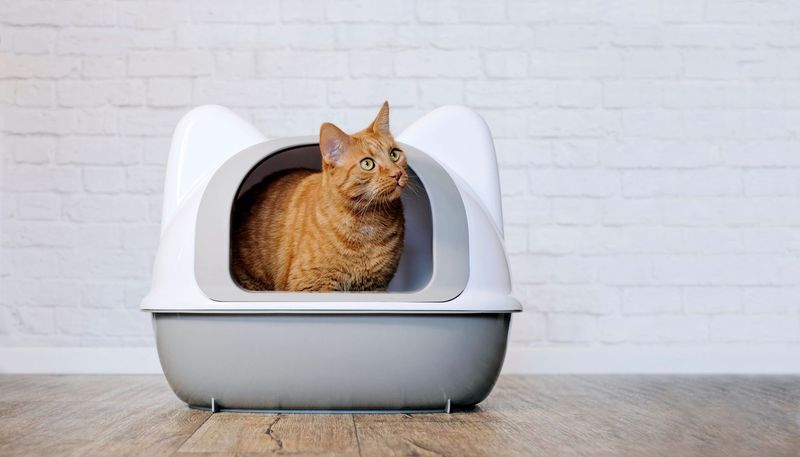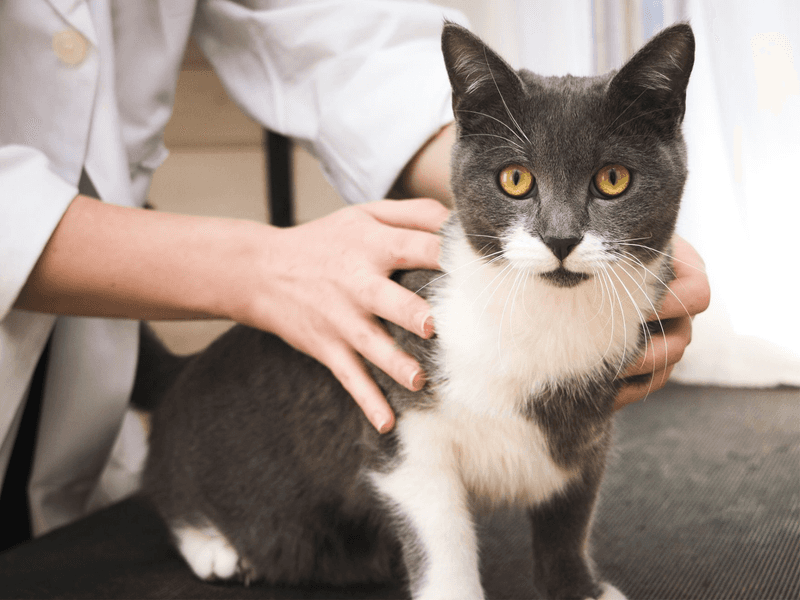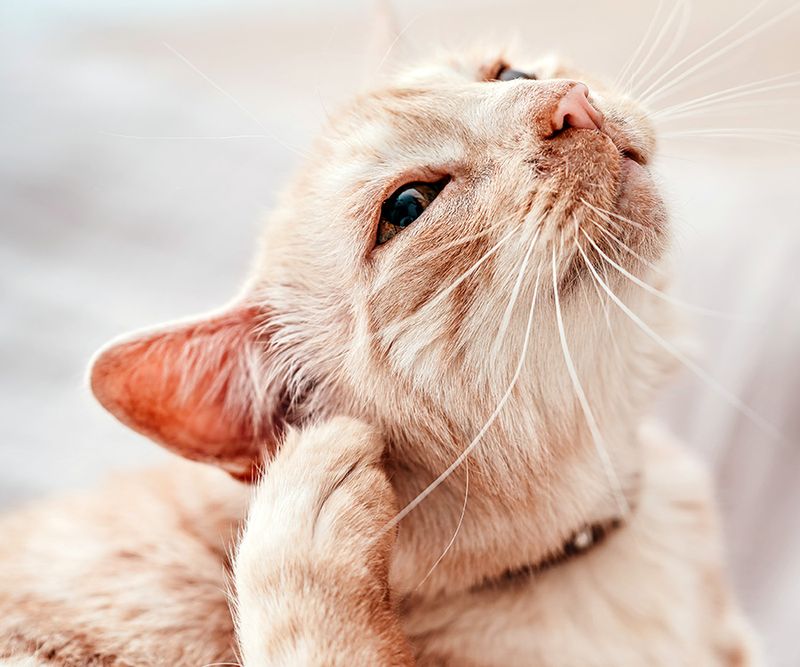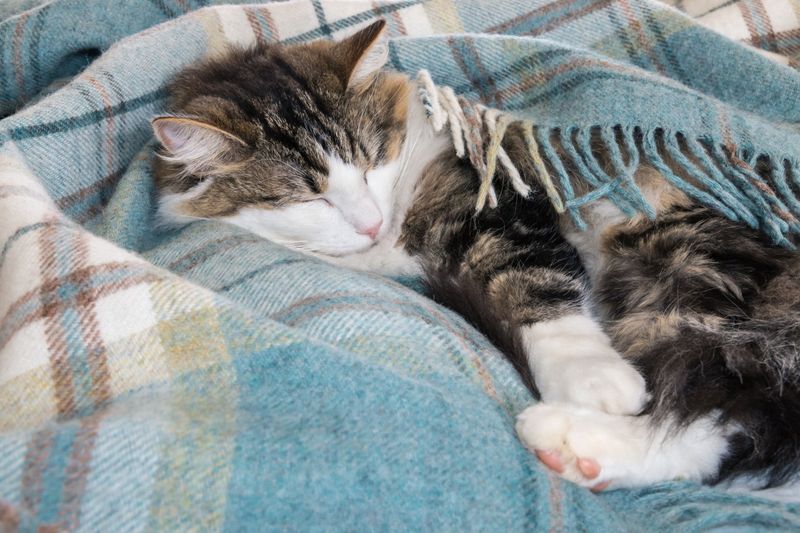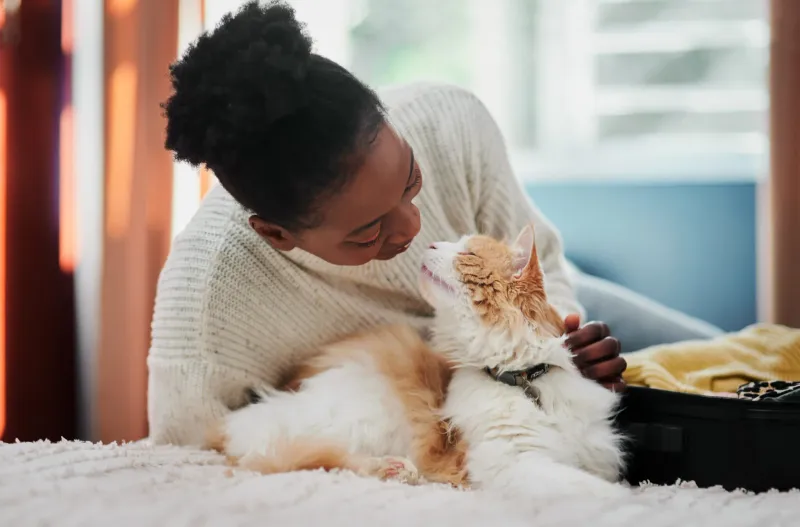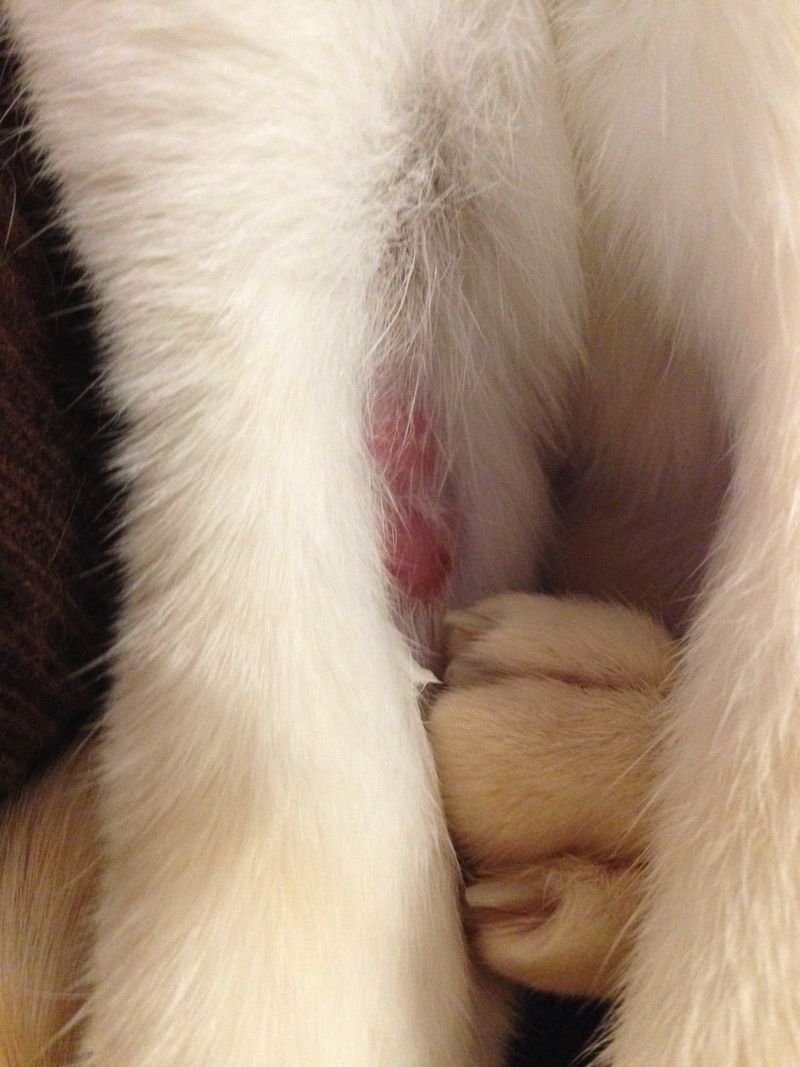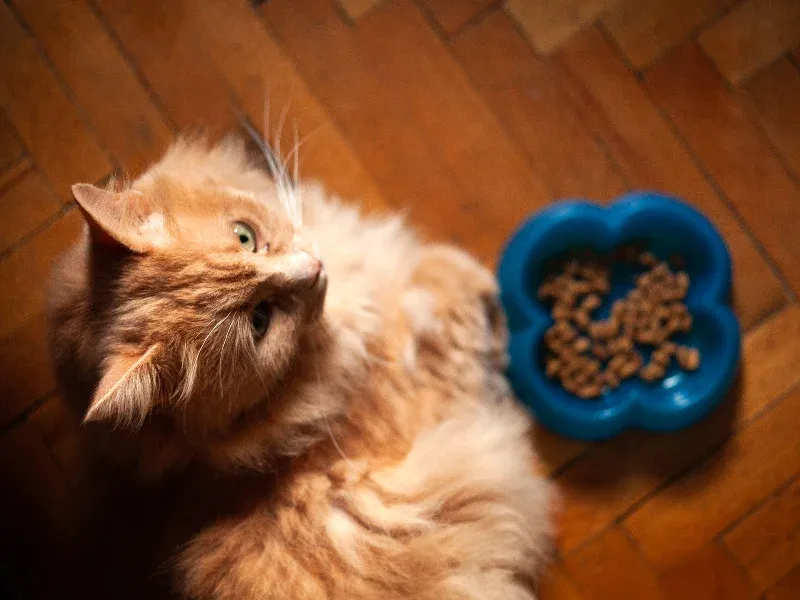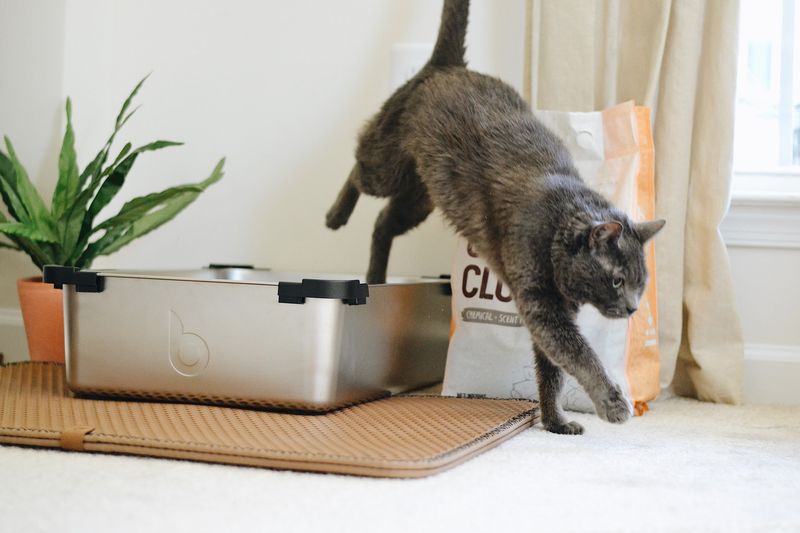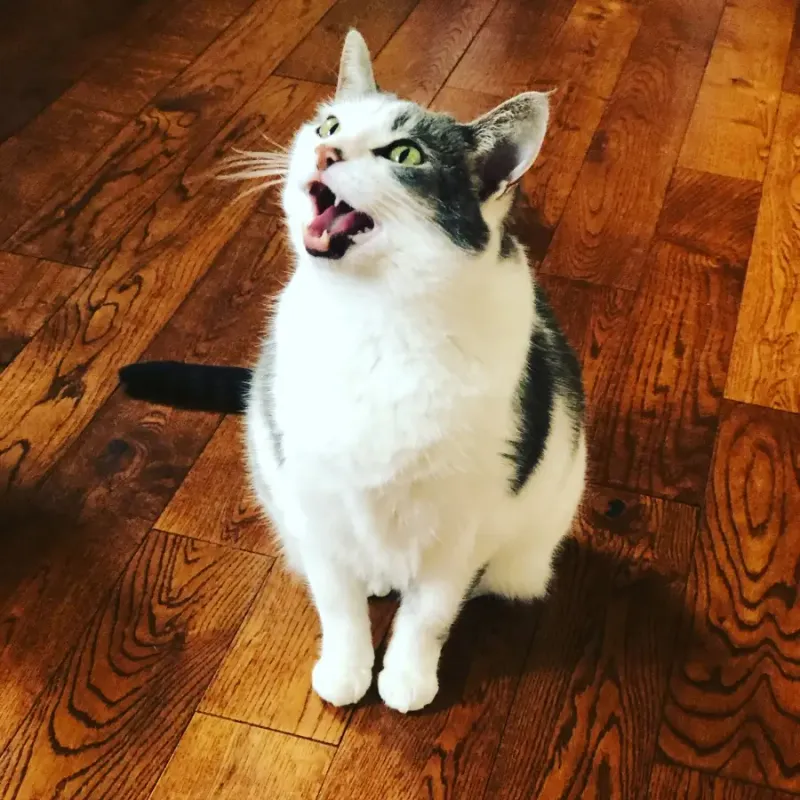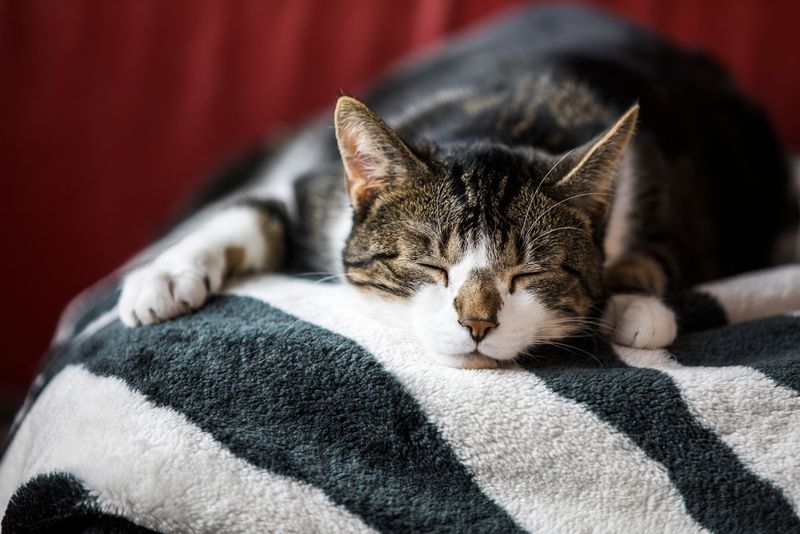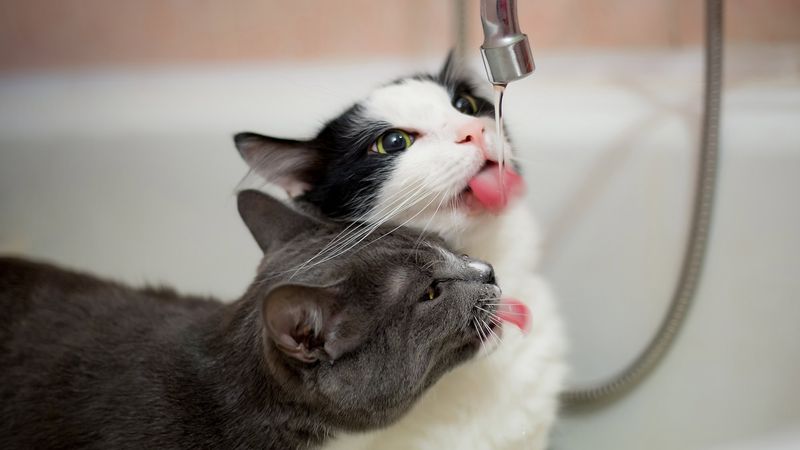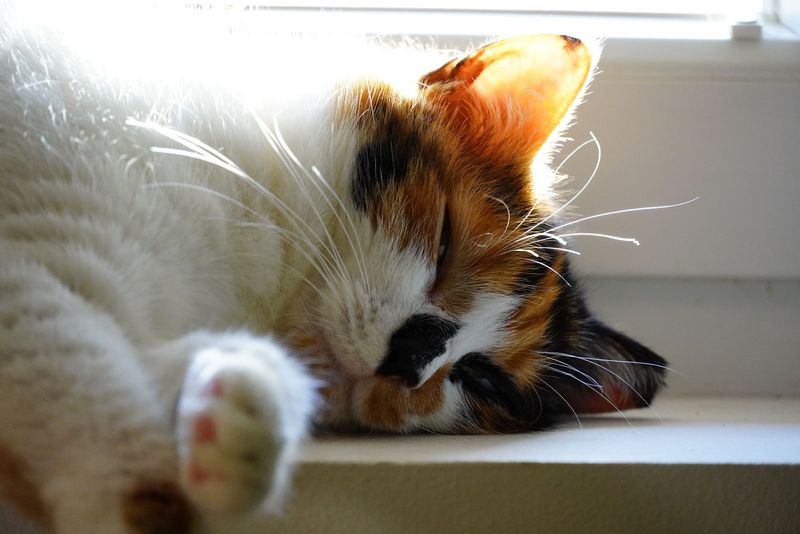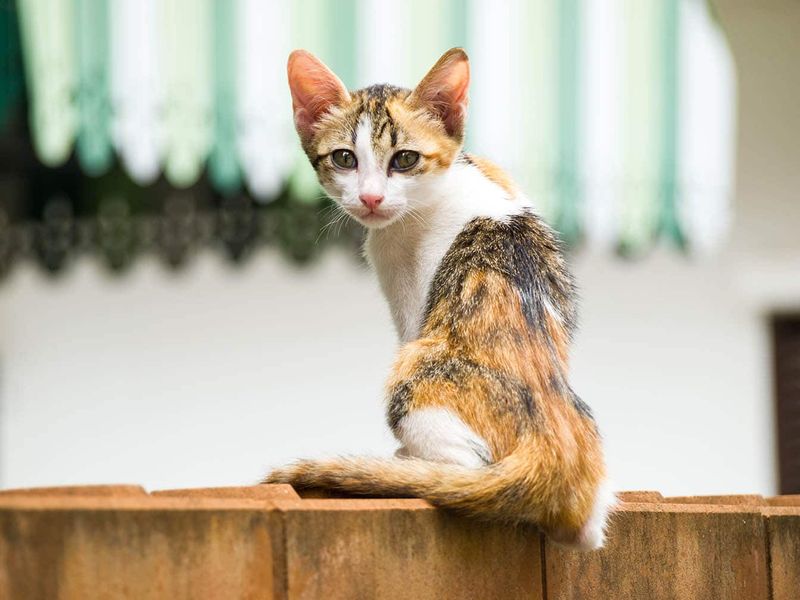📖 Table of Content:
- 1. Shiny, Clean Coat
- 2. Bright, Clear Eyes
- 3. Playful Energy
- 4. Healthy Appetite
- 5. Social Interaction
- 6. Regular Bathroom Habits
- 7. Healthy Weight & Body Condition
- 8. Clean Ears
- 9. Proper Sleep Patterns
- 10. Relaxed Body Language
- 1. Excessive Grooming
- 2. Appetite Changes
- 3. Inappropriate Elimination
- 4. Excessive Vocalization
- 5. Lethargy & Withdrawal
- 6. Changes in Water Consumption
- 7. Breathing Changes
- 8. Unexplained Weight Changes
Cats can’t tell us how they’re feeling, which makes it crucial for pet parents to recognize the subtle clues about their health. Understanding the difference between normal feline behavior and warning signs could make all the difference in your cat’s well-being. Whether you’re a new cat owner or a seasoned feline enthusiast, this guide will help you decode your cat’s secret language of wellness and distress.
1. Shiny, Clean Coat
Regular self-grooming results in a glossy, well-maintained coat that signals your cat is in top form. Cats typically spend 30-50% of their day grooming themselves, which keeps their fur clean and distributes natural oils throughout their coat.
A lustrous coat without matting, bald patches, or excessive dandruff indicates proper nutrition and good overall health. When cats feel unwell, grooming often becomes a low priority.
Healthy cats take pride in their appearance, much like how humans might dress nicely when feeling good. Their commitment to cleanliness isn’t just about vanity—it’s a fundamental indicator of physical and mental wellness.
2. Bright, Clear Eyes
Those alert, expressive windows to your cat’s soul should appear clear and bright without discharge or cloudiness. The pupils should respond appropriately to light changes, dilating in dim conditions and contracting in brightness.
Healthy cat eyes have white or slightly pink whites (sclera) and irises with consistent color. The third eyelid shouldn’t be visible unless your cat is beginning to fall asleep.
Eye health directly connects to overall well-being. Clear, bright eyes mean your feline friend likely has a properly functioning immune system and is free from infections that might otherwise cause eye problems.
3. Playful Energy
Frisky behavior and enthusiasm for toys reveal your cat’s zest for life. Even older cats should show interest in play, though perhaps less vigorously than their younger counterparts. This natural hunting behavior keeps their minds sharp and bodies active.
A thriving cat will pounce on toy mice, chase laser pointers, or bat at dangling strings with coordination and excitement. These play sessions might be brief, but should occur multiple times throughout the day.
The desire to play indicates proper energy levels, good joint health, and mental stimulation. Cats who regularly engage in play tend to maintain healthier weights and experience less stress-related behavior problems.
4. Healthy Appetite
Consistent eating habits tell you volumes about your cat’s health status. A thriving cat eagerly approaches mealtime with interest and consumes their food with steady enthusiasm—not too fast or too slowly.
Food consumption should be relatively predictable, with your cat finishing most meals. Minor preference changes occasionally are normal, but the overall pattern should remain stable. Some cats prefer grazing throughout the day, while others gobble everything at once.
Pay attention to how your cat eats, not just what they eat. Comfortable posture during meals, normal chewing, and regular food intake patterns suggest your kitty’s digestive system and teeth are functioning well.
5. Social Interaction
Contrary to their independent reputation, most healthy cats seek some form of daily social contact with their humans. This might look like curling up next to you, gentle head-butts, slow blinks, or simply hanging out in the same room.
Every cat has their own social style—some are constant companions while others prefer brief, quality interactions. The key is consistency in their social patterns. Your cat should display some interest in family activities rather than hiding constantly.
Greeting behaviors when you return home, responding to your voice, or seeking attention through gentle paws or meows are all positive social signals that your feline friend is emotionally balanced and secure.
6. Regular Bathroom Habits
Consistent litter box use without straining indicates your cat’s urinary and digestive systems are functioning properly. Healthy cats typically urinate 2-4 times daily and defecate once or twice a day, though individual patterns vary.
Waste should have predictable characteristics—urine should be clear to slightly yellow without a strong odor, while stool should be well-formed, medium-brown, and neither too hard nor too soft. After using the box, most cats will briefly cover their waste.
Monitoring these habits might seem unpleasant, but they provide crucial health information. Changes in frequency, consistency, color, or behavior around elimination often serve as early warning signs for various health conditions.
7. Healthy Weight & Body Condition
Running your hands along your cat’s sides should reveal a slight waistline behind the ribs without prominent hip bones or a hanging belly. You should feel ribs under a thin layer of fat but not see them prominently (except in certain breeds).
A well-proportioned cat carries weight evenly throughout their body. Their abdomen shouldn’t sag excessively when viewed from the side, and there should be a noticeable tuck-up behind the ribcage.
Cats at healthy weights move with ease, jumping and playing without strain. They typically maintain stable weights with only minor fluctuations. Weight maintenance indicates proper metabolism, appropriate food intake, and absence of many underlying health issues.
8. Clean Ears
Healthy feline ears appear pink inside without excessive wax, discharge, or unpleasant odors. The outer ear should be clean and free from scratches, while the inner portions contain minimal wax—just enough to protect the ear canal.
Cats typically maintain their own ear hygiene, rarely needing human intervention for cleaning. They should respond normally to sounds, perking up at interesting noises or your voice. Occasional head shaking is normal, but frequent scratching or head tilting signals problems.
Good ear health connects to overall wellbeing. Clean ears indicate absence of parasites like ear mites and proper immune function. The ears’ appearance offers valuable insights about potential allergies or infections before they become serious.
9. Proper Sleep Patterns
Cats are champion sleepers, typically logging 12-16 hours daily of shut-eye. Healthy sleep patterns include both deep sleep (completely relaxed, possibly dreaming) and lighter catnaps where they remain somewhat alert to surroundings.
Well-rested cats wake easily and transition smoothly between sleep and wakefulness. They choose various comfortable sleeping spots throughout your home, often rotating between favorite locations. After waking, they typically stretch thoroughly before moving on to their next activity.
Quality sleep supports immune function, mood regulation, and energy levels. While cats naturally sleep more than humans, they should still have active periods between naps and maintain a somewhat predictable rhythm between rest and activity.
10. Relaxed Body Language
When a cat is content, its posture is easy and relaxed, with a softly moving tail and ears angled forward or outward. The whiskers remain naturally extended.
When resting, they might stretch out completely or curl up in a comfortable ball with muscles visibly at ease. Even during alert moments, a thriving cat maintains relatively relaxed body language without constant tension or startling at minor sounds.
Watch for the slow blink—a half-closed eye gesture that signals trust and contentment. This “cat kiss” indicates your feline feels secure in their environment. Relaxed kneading behaviors and gentle purring further confirm your cat’s positive emotional state.
1. Excessive Grooming
Over-grooming crosses the line from healthy maintenance to a potential problem when cats create bald patches or irritated skin. This compulsive behavior often stems from stress, allergies, pain, or skin conditions that create uncomfortable sensations.
Look for signs like broken hairs, reddened skin, or hair-filled stool. Some cats focus obsessively on specific areas—often the belly, inner thighs, or base of the tail. The behavior may increase during stressful periods or changes in routine.
Psychogenic alopecia (stress-induced hair loss) requires veterinary attention to rule out medical causes and address underlying anxiety. Environmental enrichment, consistent routines, and sometimes medication can help manage this distressing symptom.
2. Appetite Changes
Sudden shifts in food interest demand attention, whether your cat starts refusing meals or seems constantly hungry. Decreased appetite lasting more than 24 hours can indicate pain, illness, dental problems, or stress. Even missing two meals warrants concern.
Conversely, insatiable hunger despite regular feeding might signal hyperthyroidism, diabetes, or intestinal parasites. Weight changes often accompany appetite shifts, with unexplained weight loss being particularly concerning, even if eating well.
Food avoidance behaviors like approaching the bowl but not eating, chewing on one side of the mouth, or dropping food while eating suggest pain. These subtle signs often precede complete food refusal and require prompt veterinary evaluation.
3. Inappropriate Elimination
When cats stop using their litter box reliably, they’re communicating something important. Medical issues like urinary tract infections, bladder stones, or constipation can make elimination painful, creating negative associations with the litter box.
Behavioral causes include stress from household changes, territorial conflicts with other pets, or dissatisfaction with litter box conditions. Cats may avoid dirty boxes, dislike certain litter types, or reject boxes placed in high-traffic or noisy locations.
Male cats showing straining, frequent attempts to urinate with little output, or crying during attempts need emergency care for possible urinary blockage. This life-threatening condition can develop rapidly and requires immediate veterinary intervention.
4. Excessive Vocalization
Unusual increases in meowing, yowling, or crying often indicate your cat needs attention for a specific reason. Senior cats sometimes vocalize more due to cognitive changes or disorientation, especially at night. This age-related behavior resembles dementia symptoms.
Pain frequently triggers vocal complaints, particularly when touched in sensitive areas or during movement. Thyroid issues can cause restlessness and increased vocalization, while hearing loss might lead to louder-than-normal meows as cats can’t gauge their own volume.
Unspayed females yowl during heat cycles, and some intact males become vocally frustrated. Beyond these causes, sudden changes in vocal patterns warrant veterinary evaluation to identify potential medical issues before they progress.
5. Lethargy & Withdrawal
Noticeable decreases in activity level or social engagement often serve as early warning signs of illness. A cat who normally greets you at the door but now remains hidden requires attention. This withdrawal frequently precedes more obvious symptoms of sickness.
Healthy cats have predictable activity patterns with energetic periods followed by rest. When these patterns change significantly—sleeping more than usual or showing little interest in previously enjoyable activities—something may be wrong. Cats instinctively hide weakness, making subtle behavioral changes important clues.
Reduced interaction with family members, decreased playtime, or abandoning favorite perches for hidden locations can indicate pain, illness, or emotional distress. These changes warrant monitoring and veterinary consultation if they persist beyond a day.
6. Changes in Water Consumption
Monitoring your cat’s drinking habits provides valuable health insights. Significantly increased thirst (polydipsia) often signals kidney disease, diabetes, hyperthyroidism, or certain medications’ side effects. Cats drinking excessively may empty water bowls frequently or seek unusual water sources.
Conversely, decreased water intake can lead to dehydration, particularly concerning in cats with existing kidney issues or those eating primarily dry food. Cats normally consume about 3.5-4.5 ounces of water per 5 pounds of body weight daily through food and drinking.
Water consumption changes often precede other symptoms, making them valuable early warning signs. Tracking drinking habits establishes a baseline for your specific cat, making it easier to notice meaningful deviations that warrant veterinary attention.
7. Breathing Changes
Healthy cats breathe quietly with barely noticeable chest movement at 20-30 breaths per minute while resting. Any labored breathing, wheezing, persistent coughing, or open-mouth breathing requires immediate veterinary care, as these signs indicate serious respiratory distress.
Rapid breathing (tachypnea) might occur briefly during play or stress but should quickly normalize. Prolonged rapid breathing at rest could indicate heart disease, respiratory infections, asthma, or pain. Breathing patterns should be assessed when cats are calm, not purring.
Noisy breathing, including snoring when awake, stertor (low-pitched snoring sounds), or stridor (high-pitched sounds) may indicate partial airway obstruction. These symptoms, particularly when new, should never be ignored, as respiratory compromise can rapidly become life-threatening.
8. Unexplained Weight Changes
Gradual weight loss despite normal or increased eating suggests metabolic disorders like hyperthyroidism, diabetes, or digestive absorption issues. Cats naturally hide illness, making weight changes important objective measures of health status that might be noticed before other symptoms.
Rapid weight gain without dietary changes could indicate fluid retention from heart or kidney problems. Obesity develops more gradually and brings its own health risks, including diabetes, joint problems, and reduced lifespan.
Regular weight monitoring helps detect changes early. A loss of just 10% of body weight is significant in cats. Weigh your cat monthly using a kitchen scale for small kittens ora bathroom scale (weigh yourself holding the cat, then subtract your weight) for larger cats.
